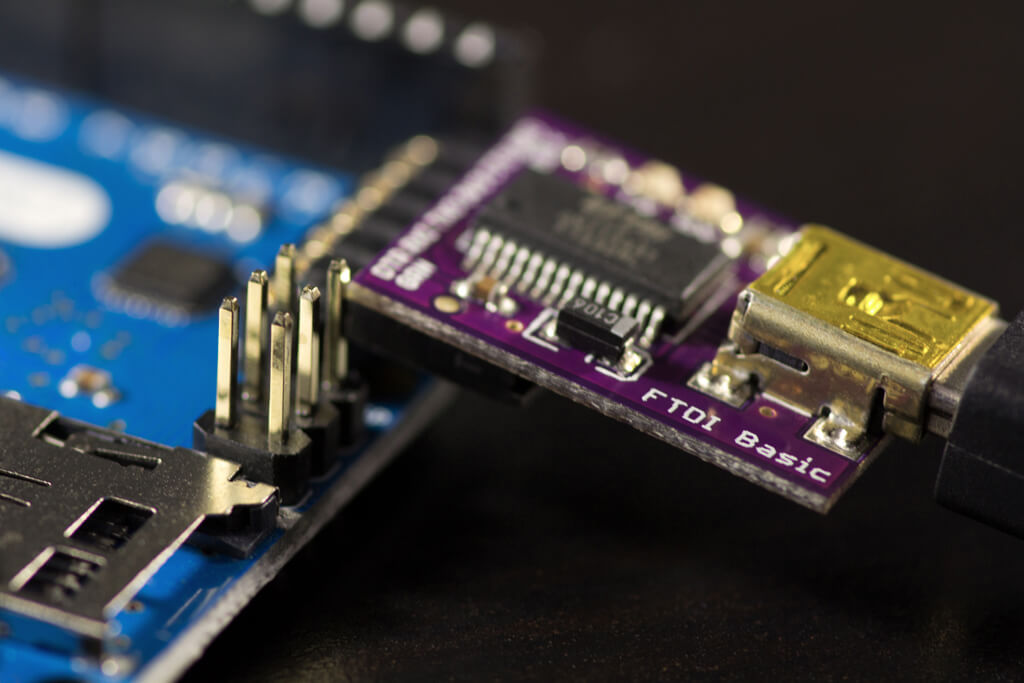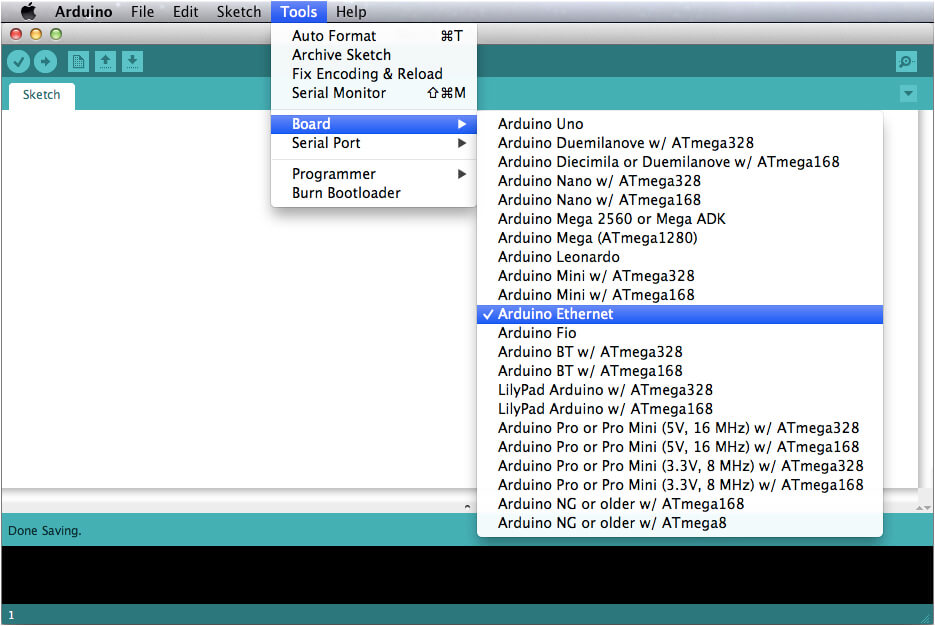The main microcontroller is based on the ATmega328 microcontroller like the Arduino Uno Board itself. There are 14 digital input and, respectively, output pins, 6 analog inputs, a 16 MHz crystal oscillator, an ICSP header, a power jack, a reset button and of course, for the Arduino Ethernet Board, the RJ45 connection.
But the Arduino Ethernet Board especially differs from the other Arduino Boards in one vital way: it does not have an onboard USB-to-serial driver chip. However, you can still use a USB Serial adapter to power the Arduino Ethernet Board as described on the official Arduino website:
The 6-pin serial programming header is compatible with the USB Serial adapter and also with the FTDI USB cables or with Sparkfun and Adafruit FTDI-style basic USB-to-serial breakout boards. It features support for automatic reset, allowing sketches to be uploaded without pressing the reset button on the board. When plugged into a USB-to-serial adapter, the Arduino Ethernet is powered from the adapter. arduino.cc, Arduino Ethernet Board
Using the Sparkfun Basic Breakout with the Arduino Ethernet Board may require a FTDI driver that causes the USB device to appear as an additional port available to the computer. Without this special FTDI driver, your Arduino Ethernet Board will be powered, but it is not possible to upload any sketches. This will be immediately apparent because without the FTDI driver there will be no serial port.
Therefore, you can download the latest version of the FTDI driver for FTDI devices on the official website for Virtual COM Port drivers.

Arduino Ethernet & LiliPad FTDI Basic Breakout
Currently, I'm using the LilyPad revision of the FTDI Basics Breakout which is pretty much the same as the FTDI Basic Breakout (apart from the color and the thickness).
To connect the FTDI Basic Breakout with your computer you can use a USB Mini-B Cable (Type A to Mini-B). As mentioned above, it is possible to power the Arduino Ethernet Board from the adapter via the USB connector.

When uploading a sketch, make sure that you have chosen the right Board and Serial Port in your Arduino IDE (Arduino › Tools › Board respectively Serial Port). There is no hidden feature therein, but sometimes it can be difficult to remember all these little things.

